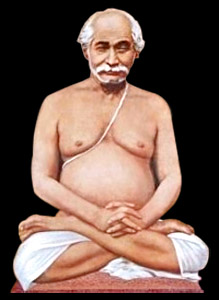 History of Kriya Yoga dates back to ancient India. It is in the Bhagavad Gita that one first finds the reference to Kriya Yoga by Lord Krishna. Besides, this branch of yoga has also been mentioned by Patanjali in his Yoga Sutras. In the second chapter of Patanjali Yoga Sutra, Sadhana Pada, he explains the concept of Kriya Yoga. Kriya refers to action. Kriya Yoga, thus, is the yoga of action. It has three tiers: Tapas, Svadhyaya and Isvarapranidhana. Only after going through these stages of Kriya Yoga an individual can reach Samadhi.
History of Kriya Yoga dates back to ancient India. It is in the Bhagavad Gita that one first finds the reference to Kriya Yoga by Lord Krishna. Besides, this branch of yoga has also been mentioned by Patanjali in his Yoga Sutras. In the second chapter of Patanjali Yoga Sutra, Sadhana Pada, he explains the concept of Kriya Yoga. Kriya refers to action. Kriya Yoga, thus, is the yoga of action. It has three tiers: Tapas, Svadhyaya and Isvarapranidhana. Only after going through these stages of Kriya Yoga an individual can reach Samadhi.
It has been mentioned time and again that Kriya Yoga was once practiced extensively practised in ancient India. With time, however, the techniques of this yoga were lost. The primary reason for this was that Kriya yoga was practiced by the sages. These hermits passed on the knowledge only to their disciples but kept it away from the reach of ordinary men. Lahiri Mahasaya received the knowledge of Kriya Yoga by the immortal Yogi Mahavatar Babaji in 1861, which is recounted in his autobiography. Yogananda wrote that Mahavatar Babaji told Lahiri Mahasaya "The Kriya Yoga that I am giving to the world through you in this nineteenth century, is a revival of the same science that Krishna gave millenniums ago to Arjuna; and was later known to Patanjali, and to Christ, St. John, St. Paul, and other disciples."
Through Lahiri Mahasaya, Kriya Yoga soon became very popular all over the India. Paramhansa Yogananda himself was the disciple of Lahiri Mahasaya, who introduced Kriya yoga to the United States and Europe during the 20th century. In present days, there are many Gurus of Kriya Yoga who claim themselves to be the disciples of Lahiri Mahasaya. Lahiri Mahasaya`s well known pupils are Swami Sri Yukteswar Giri, Sri Panchanan Bhattacharya, Swami Pranabananda, Swami Kebalananda, Swami Keshabananda and Bhupendranath Sanyal.




















